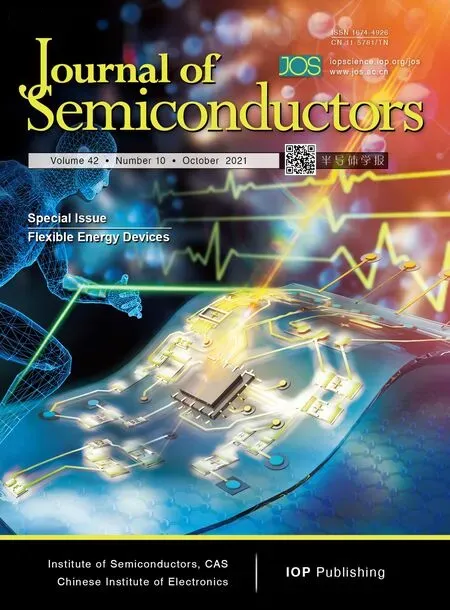Two-dimensionalair-stable CrSe2 nanosheets with thickness-tunable magnetism
Ki Kang Kim
1Department of Energy Science, SungkyunkwanUniversity (SKKU), Suwon16419, Republic of Korea
2Center for Integrated Nanostructure Physics, Institute for Basic Science(IBS), Suwon16419, Republic of Korea
Since Geimet al. firstly separated graphene from graphite by mechanical exfoliation method in 2004, the research of two-dimensional(2D) van derWaals(vdW) layered materials has begun[1]. Compared with three-dimensional materials, 2D vdW layered materials exposing the most atoms to exterior aremore sensitive to external controlandhavethe great potential applications in electronic,optoelectronicandelectrochemical area[2].
Recently, a new bright spot has appeared in the research of 2D materials: 2D vdW magnetic materials[3,4]. Mermin-Wagner theorem shows that isotropic 2D materials can’t show long-range magnetism dueto thermal fluctuation,thus intrinsic 2Dmagneticmaterialsare extensively considered to be nonexistent[5]. However, it is possible to have long range magnetic order in anisotropic 2Dmaterials. Theexistence of magneticanisotropy induces the bandgap of magnonin the dispersion relation of spin wave, separating. This band gap splits into the ground state and the excited state of the magnon, so that the magnonin theground state canmaintain the spin ordered state and exhibit the intrinsic longrange ordered magnetism[6]. Long-range magnetic order was firstly observed in 2D FePS3[7], Cr2Ge2Te6[6]and CrI3[8]crystals.Due to their ultrathin thickness and combination of vdW forces between layers, their magnetism can be effectively controlledbyelectric field,chemical modification, thickness and so on. At the same time, some interesting physical phenomena have been revealed in these materials, such as magnetic proximity effect, chiral spin state, exchangebiaseffect,quantum anomalous Hall effect[3].
What’s more, the vdW heterostructures composed by 2D materialshavehigh-quality contact interface and excellent electrical and optoelectronic properties. The electrical conductivity of 2D vdW magnetic materials covers metal (Fe3GeTe2),semiconductor(FePS3)andinsulator (Cr2Ge2Te6)[6,7,9].Through reasonable design, 2D vdW magnetic/non-magnetic material vertical heterostructure with well-matched conductivity and high-quality interface can be constructed. These heterostructures are expected to be applied in spintronic devices with high spin injection efficiency, such as spin transistors andspinvalves. The research of 2D magneticheterostructure is crucial to the field of novel magnetic sensor and storage device.
So far, intrinsic ferromagnetismhasbeen observedinseveral 2D materials. At present, most of the 2D magnets are not stable in the air environment, their monolayer and few layers can only be obtainedby mechanicalstrippingof bulk materials in controlled environment (such as glove box), with low yield and poor layer thickness control, which is extremely disadvantageous to both basic investigation and practicalapplication. Therefore,it isof great significanceto find a stableand scalable 2D magnetic material.
Recently, Duanet al. reported the epitaxial growth of 2D vdW magnetic CrSe2nanosheets on WSe2substrates(we can also say this is CrSe2/WSe2heterostructure) by chemical vapor deposition method and the thickness can be controlled bysynthetic temperature[10]. Polar reflective magneticcircular dichroism (RMCD) measurement shows that 1–3 layers are weak magnetic, and 4 layers and above are ferromagnetic.Magnetic phase diagram shows that the layer thicknesscaneffectively regulate themagnetic couplingandthethick ones show a Curie temperature of about 110 K. The theoretical calculation demonstrated that substrate-doping effect and interlayerkineticenergy gain dominatethemagneticproperty of 2D CrSe2, which is consistent with the experimental results.The magnetotransport studies based on a standard Hall bar deviceshow that CrSe2havedistinct anomalous Halleffect with a Curie temperature of about 110 K, and there is no obvious change after being exposed to air for several months. Further, the thickness and morphology oftheCrSe2monolayer characterizedbyatomic force microscopy haveno significant change when keeping in air for 45 days. Theoretical calculations also revealed the robustness of CrSe2against O2and H2O. The results demonstrated the outstandingair stability of 2D CrSe2nanosheets.
In summary, 2D vdW magnetic materials have attracted condensedattention innovel physicalproperties, multifunctional spin devices and so on. 2D vdW magnetic metal CrSe2is stable in air with thickness dependent magnetism, which is expected to obtainexcellentperformance in future 2Dspintronic devices. Controllablesynthesis of large-scale and stable 2D vdW magnetic materials with high Curie temperature and achieving high performance spintronic devices based on the heterostructures willbe thecoreissueofthenext2D magnetic materials research.
 Journal of Semiconductors2021年10期
Journal of Semiconductors2021年10期
- Journal of Semiconductors的其它文章
- Side chain engineering on D18 polymers yields 18.74% power conversion efficiency
- Recent advances and prospects of asymmetric non-fullerene small molecule acceptors for polymer solar cells
- Voc deficit in kesterite solar cells
- Flexible perovskite solar cells: Materials and devices
- Progress in flexible perovskite solar cells with improved efficiency
- Recent progress of efficient flexible solar cells based on nanostructures
